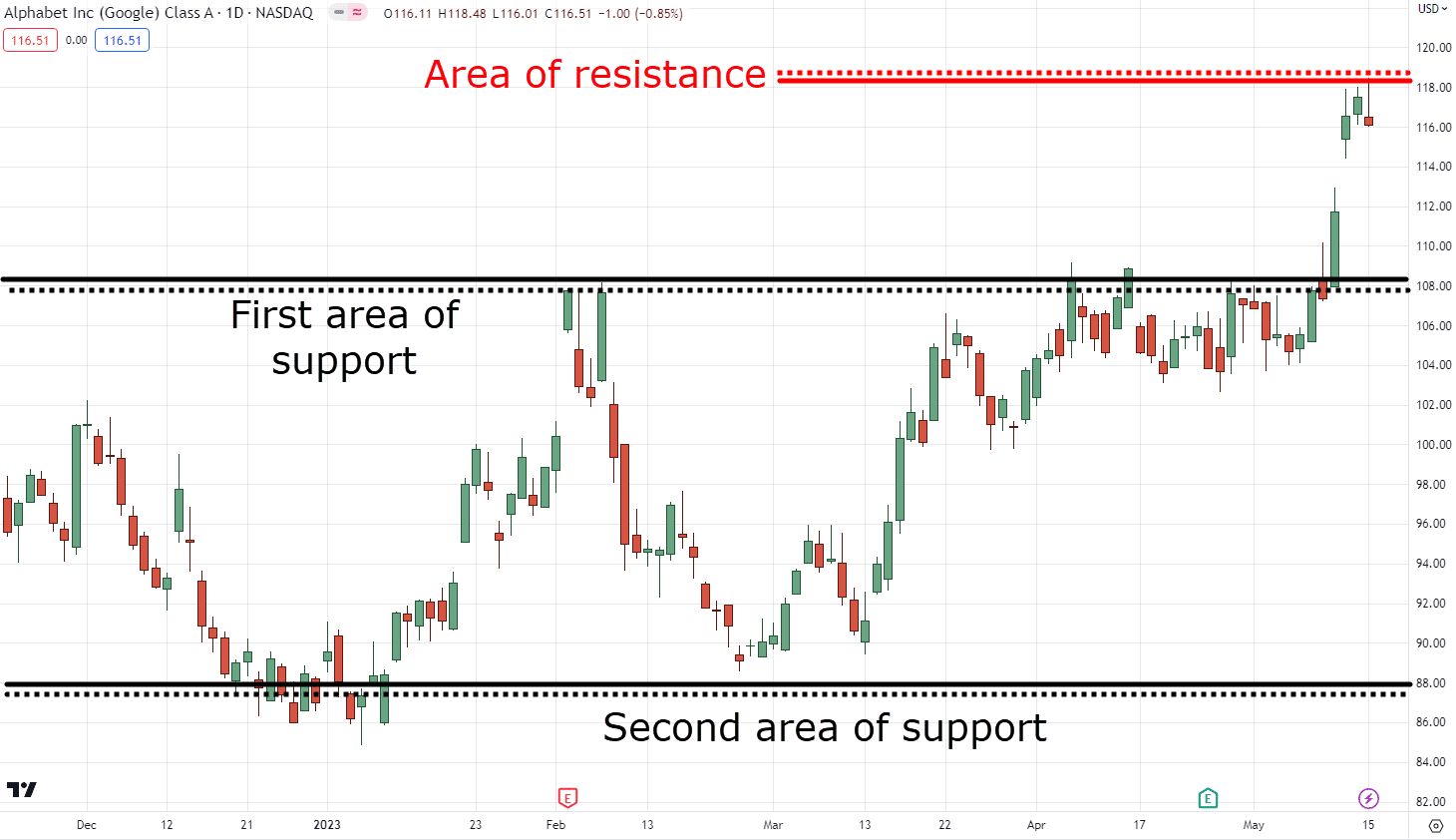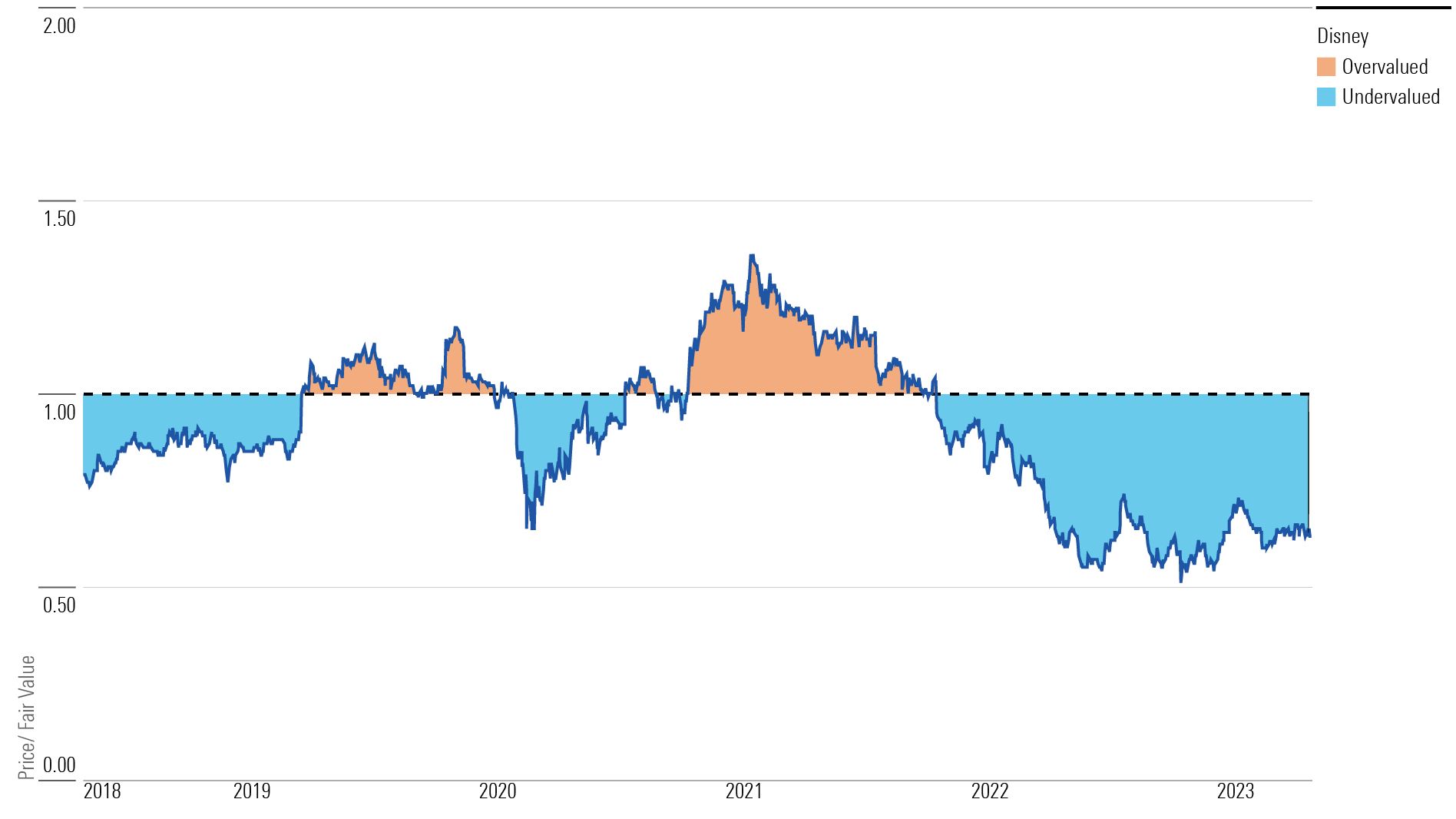Introduction
Welcome to the exciting world of stock trading! Whether you’re a seasoned investor or new to the financial market, understanding how stocks work is crucial for making informed decisions and maximizing your investment potential.
Stocks are shares of ownership in a company. When you buy stocks, you become a partial owner of that company and have the potential to benefit from its growth and profitability. Trading stocks involves buying and selling these shares through various platforms like stock exchanges and marketplaces.
Buying stocks can be done through a brokerage account, which allows you to access and invest in a wide range of companies. Once you’ve purchased stocks, you have the flexibility to hold onto them for the long-term or sell them for a profit.
Selling stocks involves choosing the right time to sell based on factors like market conditions, company performance, and your investment goals. Timing your sales effectively can lead to capital gains and help you achieve your financial objectives.
Stock exchanges are the primary venues for trading stocks. These are regulated platforms where buyers and sellers come together to execute transactions. Examples of well-known stock exchanges include the New York Stock Exchange (NYSE), NASDAQ, and London Stock Exchange (LSE).
Understanding stock prices and quotes is essential for effectively trading stocks. Stock prices are influenced by a variety of factors such as company earnings, economic conditions, and investor sentiment. Stock quotes provide information on a stock’s current price, trading volume, and other relevant details.
When trading stocks, you can place different types of stock orders. Market orders are executed at the current market price, while limit orders allow you to set a specific price at which you want to buy or sell stocks. Stop orders are used to limit losses or protect gains by triggering a sale when a stock reaches a predetermined price level.
Trading stocks comes with both risks and rewards. While there is potential for significant returns, the stock market can also be volatile and result in losses. It’s important to be aware of the risks involved and develop a comprehensive trading strategy to mitigate them.
Two popular approaches to analyzing stocks are fundamental analysis and technical analysis. Fundamental analysis focuses on evaluating a company’s financial health, industry position, and future prospects. Technical analysis, on the other hand, involves studying historical price and volume data to predict future stock movements.
There are numerous trading strategies that investors employ when trading stocks. These strategies can range from value investing, growth investing, momentum trading, to day trading. Each strategy has its own set of principles and techniques to identify potential opportunities and manage risks.
As you venture into the world of stock trading, here are some tips to keep in mind. Firstly, educate yourself about the financial markets, different investment instruments, and trading strategies. Secondly, diversify your portfolio to spread risk and maximize potential returns. Thirdly, stay informed about market news and developments that can impact stock prices.
Trading stocks can be an exciting and potentially profitable endeavor. By understanding the basics of how stocks work and applying sound trading principles, you can navigate the stock market with confidence and make informed investment decisions that align with your financial goals.
What are stocks?
Stocks, also known as shares or equities, represent a partial ownership in a publicly traded company. When a company decides to go public, it offers its shares to the public through an initial public offering (IPO). Investors can then buy these shares, becoming shareholders and having certain rights in the company. The total number of outstanding shares represents the company’s equity capital and determines its market value.
By purchasing stocks, investors essentially become business owners, with their ownership proportional to the number of shares they own. This ownership entitles shareholders to a portion of the company’s profits in the form of dividends, if the company chooses to distribute them. Dividends are typically paid out of the company’s profits on a periodic basis, such as quarterly or annually.
Aside from dividends, investors can also benefit from capital appreciation. If the company performs well and its value increases, the price of its shares will rise. This allows shareholders to sell their shares at a higher price than they paid for, resulting in a profit called capital gains.
Stocks can be categorized into different types based on their characteristics. Common stock is the most prevalent type, offering investors voting rights at shareholders’ meetings and a claim on the company’s assets and earnings. Preferred stock, on the other hand, grants shareholders a fixed dividend payment but usually does not come with voting rights.
Companies may issue different classes of stocks, usually denoted by letters such as Class A, Class B, or Class C. Each class has specific rights and privileges assigned to it, such as voting rights or dividend preferences. This allows companies to offer different types of shares to different investors, depending on their needs and objectives.
The value of a stock is determined by supply and demand in the stock market. The more investors that want to buy a particular stock, the higher its price will rise. Conversely, if there is a high number of sellers and a low demand, the price may decline. Numerous factors can influence the supply and demand, including economic conditions, company performance, industry trends, and investor sentiment.
It’s important to note that investing in stocks carries risks. The value of stocks can fluctuate significantly due to market forces, which means that investors may experience losses if the price of their stocks declines. Additionally, investing in individual stocks involves company-specific risks, such as poor management decisions, industry disruptions, or regulatory changes.
To mitigate risks and diversify their portfolios, investors often invest in a combination of stocks from different companies and industries. This helps spread risk and reduce exposure to the performance of a single stock or sector. Diversification can be achieved by investing in mutual funds, exchange-traded funds (ETFs), or by building a diversified portfolio of individual stocks.
Understanding what stocks are and how they work is the foundation of successful investing in the stock market. By familiarizing yourself with the key concepts and principles of stocks, you can make informed decisions when buying, selling, or holding shares in companies.
How to buy stocks
Buying stocks is relatively straightforward, thanks to the accessibility of online trading platforms and brokerage accounts. Here’s a step-by-step guide on how to buy stocks:
- Educate yourself: Before diving into the world of stock trading, take the time to educate yourself about the basics of investing in stocks. Familiarize yourself with important terms, concepts, and investment strategies to make informed decisions.
- Choose a brokerage account: Select a reputable brokerage firm that suits your investment needs. Consider factors such as fees, available research tools, customer service, and the user interface of the trading platform. Many brokerage firms offer both full-service and discount options, so choose the one that aligns with your preferences and level of expertise.
- Open a brokerage account: Complete the account-opening process by providing the necessary personal information and funding the account. Most brokerage firms require a minimum deposit to get started, so check the requirements beforehand.
- Research and analyze: Conduct thorough research on the companies you’re interested in investing in. Consider factors such as the company’s financial health, earnings growth potential, competitive advantages, and industry trends. Use financial reports, news sources, and analyst recommendations to gain insights into the company’s prospects.
- Develop an investment strategy: Determine your investment objectives and risk tolerance. Decide whether you’re looking for long-term growth, regular income, or a combination of both. Additionally, outline your exit strategy and criteria for selling stocks before making the purchase.
- Place your order: Once you’ve done your due diligence, log in to your brokerage account and navigate to the trading platform. Enter the symbol or name of the stock you want to buy, select the order type (market, limit, or stop), specify the number of shares you want to buy, and review the order details.
- Review and confirm: Double-check the order details, including the stock symbol, order type, number of shares, and price. Pay attention to any fees or commissions associated with the trade. Once you’re confident with the order, confirm and submit it.
- Monitor your investments: After purchasing stocks, monitor your investments regularly. Track the performance of the companies you’ve invested in, stay up to date with relevant news and events, and reassess your investment strategy periodically.
It’s worth noting that buying stocks involves risks, particularly the risk of losing your invested capital. Therefore, it’s essential to exercise caution, diversify your portfolio, and consider seeking professional advice if you’re uncertain about specific investments.
By following these steps and staying informed about the stock market, you can start building your investment portfolio and take advantage of the opportunities that stock trading offers.
How to sell stocks
When it comes to selling stocks, the process is relatively straightforward. Here’s a step-by-step guide on how to sell stocks:
- Evaluate your investment strategy: Before selling any stocks, carefully evaluate your investment strategy and reasons for selling. Consider factors such as your financial goals, the performance of the stock, changes in company fundamentals, and any external factors affecting the market.
- Analyze the stock’s current status: Review the stock’s current market price, recent price trends, trading volume, and any news or events that could impact its value. Assess whether the stock has reached your target price or if there are signs of potential downside risks.
- Access your brokerage account: Log in to your brokerage account, navigate to the trading platform, and locate the stocks you want to sell.
- Choose the order type: Select the appropriate order type based on your selling strategy. Market orders are executed at the current market price, while limit orders allow you to set a specific price at which you want to sell. Stop orders are used to limit losses or protect gains by triggering a sale when a stock reaches a predetermined price level.
- Enter the selling details: Enter the number of shares you want to sell and specify the price if you’re placing a limit or stop order.
- Review and confirm: Double-check the selling details, including the stock symbol, order type, number of shares, and price. Consider any fees or commissions associated with the trade. Once you’re satisfied, confirm and submit the order.
- Monitor the sale: Keep an eye on the sale as it progresses. Depending on market conditions and the type of order you placed, the sale may be executed immediately or take some time to be fulfilled.
- Settlement and receiving funds: After the sale is completed, the funds from the sale will typically be deposited into your brokerage account. The settlement period can vary depending on the exchange and type of trade. Once the funds are available, you can withdraw them or reinvest in other securities.
It’s important to note that selling stocks can have tax implications. Depending on your jurisdiction and the duration of your holding period, you may be subject to capital gains taxes. Consult with a tax professional to ensure compliance with relevant tax laws and to optimize your tax strategy.
Lastly, selling stocks should be approached with a disciplined and rational mindset. Emotional decisions can lead to mistimed sales or missed opportunities. Regularly reviewing and adjusting your investment portfolio based on your financial goals and market conditions can help you make informed decisions when it comes to selling stocks.
By following these steps and staying informed about the market, you can confidently navigate the process of selling stocks and make decisions aligned with your investment objectives.
Stock exchanges and marketplaces
Stock exchanges and marketplaces play a crucial role in facilitating the buying and selling of stocks. These platforms provide a regulated environment where buyers and sellers can participate in trading activities. Here’s an overview of stock exchanges and marketplaces:
A stock exchange is a centralized marketplace where stocks, bonds, and various other financial instruments are traded. It serves as an intermediary between buyers and sellers, ensuring transparency, fairness, and liquidity in the trading process. Some of the well-known stock exchanges include the New York Stock Exchange (NYSE), NASDAQ, London Stock Exchange (LSE), and Tokyo Stock Exchange (TSE).
Stock exchanges act as physical or virtual locations where buyers and sellers come together to execute transactions. Traditionally, stock exchanges had physical trading floors where brokers and traders would gather to place orders. However, with advancements in technology, most trading now takes place electronically, enabling investors from around the world to participate in the market.
Stock exchanges have strict listing requirements that companies must meet in order to have their stocks traded on the exchange. These requirements typically include minimum market capitalization, financial performance, and corporate governance standards. Listing on a reputable stock exchange can enhance a company’s credibility and visibility in the investment community.
Marketplaces, on the other hand, are platforms that facilitate the trading of stocks outside of traditional stock exchanges. These can include alternative trading systems (ATS), over-the-counter (OTC) markets, and electronic communication networks (ECN). Marketplaces provide additional trading opportunities and offer greater flexibility, allowing for faster and more efficient transactions.
Alternative trading systems (ATS) are venues that match buyers and sellers of securities without the need for a centralized exchange. ATSs are commonly used for trading large blocks of shares or for specialized markets, such as trading certain types of derivatives or foreign securities.
Over-the-counter (OTC) markets are decentralized platforms where stocks are traded directly between participants. OTC trading typically involves smaller companies and securities that do not meet the listing requirements of major stock exchanges. OTC markets provide flexibility and accessibility to a wide range of securities.
Electronic communication networks (ECN) are electronic platforms that facilitate stock trading by automatically matching buy and sell orders. ECNs are used by institutional and individual investors alike, offering increased speed and efficiency in executing trades.
Both stock exchanges and marketplaces play an important role in ensuring the smooth functioning of the stock market. They provide liquidity, transparency, and a regulated environment for investors to trade stocks. The choice of which platform to use for trading depends on factors such as the type of securities being traded, the size of transactions, and individual preferences.
It’s important for investors to understand the rules and regulations of the stock exchange or marketplace they are using. This includes understanding trading hours, fees, order types, and any specific requirements for listing or participating in the market.
By leveraging the opportunities provided by stock exchanges and marketplaces, investors can access a wide range of stocks, enhance their portfolio diversification, and participate in the growth and value creation offered by the global stock market.
Understanding stock prices and quotes
Stock prices and quotes provide valuable information to investors, helping them assess the value and potential of a stock. Understanding how stock prices are determined and how to interpret stock quotes is essential for navigating the stock market. Here’s a breakdown of these key concepts:
Stock price is the current market value of a single share of a company’s stock. It represents the price at which buyers are willing to purchase the stock and sellers are willing to sell it. Stock prices are influenced by various factors, including company performance, market conditions, investor sentiment, and economic indicators.
Stock quotes provide detailed information about a particular stock, allowing investors to assess its current status at a glance. Some of the key components of a stock quote include:
- Stock symbol: This is an abbreviated representation of the company’s name used to identify the stock. For example, “AAPL” is the stock symbol for Apple Inc.
- Stock exchange: The stock exchange where the stock is listed and traded, such as NYSE or NASDAQ.
- Price: The current market price at which the stock is trading.
- Bid and ask price: The bid price represents the highest amount that buyers are willing to pay for the stock, while the ask price is the lowest amount sellers are willing to accept. The difference between the bid and ask prices is known as the bid-ask spread.
- Volume: The number of shares traded during a particular period, usually measured in daily or average daily volume.
- 52-week range: The highest and lowest prices at which the stock has traded over the past 52 weeks, providing insight into the stock’s volatility.
- Market capitalization: The total market value of a company’s outstanding shares, calculated by multiplying the stock price by the number of outstanding shares.
- Dividend yield: The annual dividend payment per share divided by the stock price. It indicates the percentage return on investment through dividends.
Stock prices and quotes are dynamic, constantly changing based on market activity and investor sentiment. They provide valuable information that can help investors make informed decisions about buying, selling, or holding stocks.
Investors analyze stock prices and quotes in conjunction with other information, such as the company’s financial performance, industry trends, and market conditions, to assess the value and potential of a stock. This process is known as fundamental analysis.
Technical analysis is another approach that focuses on studying historical price and volume patterns to predict future stock movements. Technical analysts use tools such as charts, trend lines, and indicators to identify buying and selling opportunities based on price patterns and market trends.
It’s important to note that stock prices can be volatile and subject to price fluctuations. Various factors such as company earnings reports, economic news, geopolitical events, and market sentiment can cause stock prices to rise or fall.
By staying informed about stock prices and quotes, investors can track the performance of their investments, identify potential opportunities, and make informed decisions for their portfolios. Monitoring stock prices and quotes regularly is an essential part of successful stock trading and investing.
Types of stock orders
When trading stocks, investors have the ability to place various types of orders to buy or sell stocks. These different order types allow investors to execute trades based on their specific trading strategies and investment goals. Here are some common types of stock orders:
- Market orders: A market order is the simplest type of order. It instructs the broker to buy or sell a stock at the prevailing market price. Market orders are executed immediately, guaranteeing the completion of the trade but not the exact price. This type of order is commonly used when timing is more important than the price.
- Limit orders: A limit order allows investors to set a specific price at which they are willing to buy or sell a stock. When placing a buy limit order, the order will be executed if the stock price reaches or falls below the specified limit price. When placing a sell limit order, the order will be executed if the stock price reaches or exceeds the specified limit price. Limit orders provide control over the price but do not guarantee immediate execution.
- Stop orders: A stop order is an order that becomes a market order once the stock reaches a specified price called the stop price. A buy stop order is placed above the current market price, and it becomes a market order when the stock price reaches or exceeds the specified stop price. A sell stop order is placed below the current market price, and it becomes a market order when the stock price reaches or falls below the stop price. Stop orders are commonly used to limit losses or protect gains.
- Stop-limit orders: A stop-limit order combines features of both stop orders and limit orders. It becomes a limit order, rather than a market order, once the stock reaches the specified stop price. The order will be executed at the specified limit price or better, but there is no guarantee of execution if the stock does not reach the limit price. Stop-limit orders provide investors with more control over both the stop price and the limit price, but they run the risk of the order not being filled.
- Trailing stop orders: A trailing stop order is a type of stop order that is set at a certain percentage or dollar amount below the market price for a long position or above the market price for a short position. The trailing stop order adjusts automatically as the stock price moves, maintaining the specified distance below or above the market price.
- All-or-none (AON) orders: An all-or-none order instructs the broker to execute the entire order at once or not at all. This means that the order will not be partially filled. AON orders are commonly used when investors want to ensure they acquire or dispose of a specific quantity of shares in a single transaction.
It’s important for investors to understand the characteristics and implications of each order type before placing trades. The choice of order type depends on factors such as market conditions, the investor’s risk tolerance, and the desired execution strategy.
By selecting the appropriate order type, investors can implement their trading strategies effectively, manage risk, and achieve their investment objectives in the stock market.
Risks and rewards of trading stocks
Trading stocks offers both potential rewards and inherent risks. Understanding these risks and rewards is essential for investors to make informed decisions and manage their portfolios effectively. Here’s an overview of the risks and rewards associated with trading stocks:
Rewards:
Potential for high returns: Stocks have historically provided higher returns compared to other investment options such as bonds or cash. By investing in well-performing companies, investors can benefit from capital appreciation and dividend payments, leading to potentially significant long-term returns.
Building wealth: Successful stock trading can be a means to accumulate wealth over time. With careful research, a disciplined approach, and smart investment decisions, investors can increase their net worth through capital gains and compound their returns.
Ownership in companies: Investing in stocks grants individuals ownership in the underlying companies. Shareholders may have the right to vote on matters such as corporate governance and key decisions, giving them a say in the company’s direction.
Liquidity: The stock market offers high liquidity, meaning investors can buy and sell stocks relatively quickly. This liquidity allows investors to access their funds when needed, providing flexibility in managing their investment portfolios.
Risks:
Market volatility: Stock prices can be highly volatile, meaning they can experience significant fluctuations in response to economic conditions, company-specific news, and investor sentiment. The potential for unpredictable price swings can lead to substantial gains or losses in a short period.
Company-specific risks: Investing in individual stocks exposes investors to company-specific risks such as poor management decisions, changes in industry dynamics, product failures, or regulatory changes. A decline in the financial performance of a company can result in a decrease in its stock price and potential losses for investors.
Market risk: The overall stock market can experience downturns or bearish periods, often driven by macroeconomic factors such as recessions, geopolitical events, or financial crises. These market downturns can impact stock prices negatively across various sectors, causing widespread losses for investors.
Liquidity risk: While stocks are generally liquid assets, not all stocks have the same level of trading activity. Investors may face challenges selling illiquid stocks quickly, especially during market downturns. Illiquid stocks can have wider bid-ask spreads and may experience price slippage when executing large sell orders.
Psychological biases and emotional decisions: The stock market can be influenced by investor psychology, leading to irrational decision-making. Emotions such as fear and greed can drive impulsive buying or selling, which may result in suboptimal trading outcomes.
Risk of capital loss: There is always a risk of losing a portion or all of the invested capital when trading stocks. The value of stocks can fluctuate based on a multitude of factors, and investors may experience losses if the price of their stocks declines.
It’s important for investors to assess their risk tolerance, set realistic expectations, and diversify their portfolios to manage these risks effectively. Diversification across different industries, asset classes, and geographic regions can help mitigate the impact of individual stock volatility and reduce overall portfolio risk.
By understanding the potential rewards and risks associated with trading stocks, investors can make informed decisions, balance their risk exposure, and work towards achieving their financial goals.
Fundamental analysis vs. technical analysis
When it comes to analyzing stocks, investors have two primary approaches: fundamental analysis and technical analysis. Each method employs different techniques and focuses on distinct aspects of a company’s stock. Here’s a comparison of fundamental analysis and technical analysis:
Fundamental analysis:
Fundamental analysis involves evaluating a company’s financial health, performance, and growth prospects to determine its intrinsic value and potential for future success. It focuses on studying the company’s financial statements, management team, industry position, and economic factors that influence its business.
Key factors: A fundamental analysis considers a range of factors, including:
- Financial statements: Evaluating a company’s financial statements, such as the balance sheet, income statement, and cash flow statement, to assess its revenue, expenses, profitability, and liquidity.
- Earnings growth: Analyzing historical and projected earnings growth to determine a company’s ability to generate profits and potential for future value appreciation.
- Industry analysis: Assessing the company’s position within its industry, competition, market share, and potential growth opportunities.
- Management team: Evaluating the qualifications and experience of the company’s management team to assess their ability to execute the business strategy effectively.
- Macroeconomic factors: Considering broader economic trends and factors that could impact the company’s performance, such as interest rates, inflation, and geopolitical events.
Fundamental analysis aims to identify undervalued or overvalued stocks based on the company’s underlying fundamentals. Investors using fundamental analysis typically take a long-term perspective, seeking stocks that align with their investment criteria and offer opportunities for long-term growth.
Technical analysis:
Technical analysis, on the other hand, focuses on studying historical price and volume data to identify patterns, trends, and indicators that can be used to predict future price movements. It does not concern itself with the underlying financials or the intrinsic value of a company.
Key factors: Technical analysis considers various factors, including:
- Price patterns: Recognizing recurring chart patterns, such as head and shoulders, double tops, or triangles, to anticipate future price movements.
- Technical indicators: Using tools such as moving averages, relative strength index (RSI), and stochastic oscillators to identify overbought or oversold conditions and potential trend reversals.
- Volume analysis: Analyzing the trading volume alongside price movements to assess the strength or weakness of market trends.
- Trend analysis: Identifying and following trends, such as uptrends, downtrends, or sideways movements, to determine the direction of future price movements.
Technical analysis aims to identify short-term trading opportunities by timing entry and exit points based on historical price patterns and technical indicators. Traders using technical analysis often have a shorter time horizon and focus on capturing shorter-term price fluctuations.
Both fundamental analysis and technical analysis have their merits and limitations. Fundamental analysis provides a deeper understanding of a company’s fundamentals, long-term growth potential, and intrinsic value. Technical analysis, on the other hand, can provide insights into short-term price movements and trading patterns.
It’s important for investors to recognize that neither approach is foolproof and that each has its own set of assumptions and limitations. Some investors may choose to combine both approaches to gain a comprehensive view of a stock’s potential.
Ultimately, the choice between fundamental analysis and technical analysis depends on an investor’s investment goals, time horizon, risk tolerance, and personal preferences. By understanding the approach that aligns best with their investing style, investors can make informed decisions when analyzing stocks and managing their portfolios.
Common stock trading strategies
Stock trading involves various strategies that investors employ to make informed decisions about buying and selling stocks. Each strategy has its own set of principles and techniques, aiming to maximize returns while managing risks. Here are some common stock trading strategies:
1. Value investing: Value investing involves identifying undervalued stocks that have a lower market price compared to their intrinsic value. Value investors look for companies with solid fundamentals, strong cash flows, and potential for future growth. The goal is to buy stocks at a discount and hold them until the market recognizes their true value.
2. Growth investing: Growth investors seek stocks of companies with high growth potential. They focus on companies that have a track record of strong earnings growth, innovative products or services, and expanding market share. Growth investors are willing to pay a premium for stocks with the expectation that their value will continue to increase over time.
3. Momentum trading: Momentum traders look for stocks that are exhibiting strong upward or downward price movements. They capitalize on the momentum of the stock by buying when the stock is in an uptrend or selling short when the stock is in a downtrend. Momentum traders rely heavily on technical analysis and short-term price patterns to make trading decisions.
4. Dividend investing: Dividend investing involves focusing on stocks that regularly pay dividends to shareholders. Dividend investors seek companies with a history of consistent dividend payments and favorable dividend yields. The aim is to generate a steady income stream from regular dividend payments, along with the potential for capital appreciation.
5. Day trading: Day traders aim to profit from short-term price movements by executing multiple trades within a single trading day. They take advantage of intraday volatility and leverage technical analysis and real-time market data to make quick trading decisions. Day trading requires active monitoring of the market and close attention to risk management.
6. Swing trading: Swing traders aim to capture shorter-term price movements that occur over a few days to a few weeks. They look for stocks with momentum or potential reversals and seek to profit by entering and exiting trades during these price swings. Swing trading involves a combination of technical analysis, market trends, and risk management techniques.
7. Contrarian investing: Contrarian investors go against the prevailing market sentiment and buy stocks that are out of favor or undervalued. They believe that the market often overreacts to news or events, creating opportunities to buy stocks at a discount. Contrarian investing requires patience, research, and the ability to withstand short-term market fluctuations.
It’s important for investors to understand that each trading strategy carries its own risks and requires a thorough understanding of the approach being used. Additionally, investors should align their trading strategy with their investment goals, risk tolerance, and time horizon.
Successful stock trading involves a combination of careful analysis, risk management, and continuous learning. Investors should continually evaluate and refine their trading strategies based on market conditions, industry trends, and individual stock performance.
Ultimately, the choice of trading strategy depends on the investor’s preferences, goals, and level of expertise. By adopting a well-defined trading strategy and sticking to a disciplined approach, investors increase their chances of making profitable trades in the dynamic stock market.
Tips for successful stock trading
Successful stock trading requires a combination of knowledge, analysis, and discipline. While trading stocks can be rewarding, it also carries inherent risks. Here are some important tips to help increase your chances of success when trading stocks:
1. Educate yourself: Invest time in learning about the stock market, different investment instruments, and trading strategies. Familiarize yourself with financial statements, market dynamics, and valuation techniques. Continuously expand your knowledge base through books, online courses, and staying up-to-date with financial news.
2. Set clear goals: Define your investment goals, whether it’s long-term growth, generating income, or a combination of both. Having clear objectives will guide your trading decisions and help you stay focused on your desired outcomes.
3. Develop a trading plan: Create a well-defined trading plan that outlines your trading strategy, risk tolerance, and specific criteria for entering and exiting trades. A trading plan helps you make rational decisions based on predetermined rules, reducing the influence of emotions on your trading decisions.
4. Diversify your portfolio: Spread your investment across different stocks, industries, and asset classes. Diversification helps reduce the impact of any single stock’s performance on your portfolio and mitigates risk. Consider investing in mutual funds or exchange-traded funds (ETFs) for instant diversification.
5. Manage risk: Prioritize risk management by setting stop-loss orders to limit potential losses. Determine your risk tolerance and allocate your capital accordingly. Avoid investing more than you can afford to lose and be aware of the risks associated with individual stocks and the broader market.
6. Stay informed: Keep up with the latest market news, company announcements, and economic indicators that can impact the stock market. Utilize reliable sources of information and consider subscribing to newsletters, following financial experts, and using financial data platforms to stay informed.
7. Practice patience: Successful stock trading requires patience. Avoid making impulsive decisions based on short-term market fluctuations or the fear of missing out. Stick to your trading plan, follow your analysis, and make decisions based on rational judgment rather than emotions.
8. Use basic technical analysis: Familiarize yourself with basic chart patterns, trend lines, and technical indicators. While fundamental analysis provides a solid foundation, technical analysis can offer insights into short-term price movements and potential entry or exit points.
9. Be disciplined: Stick to your trading plan and remain disciplined in executing your trades. Avoid chasing hot tips or succumbing to market hype. Emotion-driven trading decisions often lead to undesirable outcomes. Trust your analysis and stick to your predetermined rules.
10. Learn from your mistakes: Acknowledge that not all trades will be winners. Use your trading experience, both successes, and failures, as a learning opportunity. Analyze your mistakes, adjust your approach if necessary, and continuously improve your trading skills.
Remember, successful stock trading requires time, patience, and practice. No trader achieves consistent success overnight. By following these tips, adapting to changing market conditions, and continually expanding your knowledge, you enhance your chances of success in the dynamic world of stock trading.
Conclusion
Trading stocks can be an exciting and potentially lucrative endeavor for investors. However, it requires a solid understanding of how stocks work and the various factors that influence their prices. By familiarizing yourself with the fundamentals of stock trading, you can navigate the financial markets more confidently and make informed investment decisions that align with your goals.
We explored key concepts such as what stocks are, how to buy and sell stocks, different types of stock orders, and the role of stock exchanges and marketplaces. We also discussed the importance of understanding stock prices and quotes, as well as the differences between fundamental and technical analysis.
Furthermore, we delved into common stock trading strategies and provided tips for successful stock trading, emphasizing the significance of education, goal-setting, risk management, and staying informed. These guidelines can help you develop a robust trading plan, manage risk effectively, and achieve your desired outcomes in the stock market.
It’s important to recognize that investing in stocks carries inherent risks, and past performance is not indicative of future results. The stock market can be unpredictable and subject to fluctuations influenced by a variety of factors. Therefore, always exercise diligence, conduct thorough research, and consult with a financial professional if needed.
By staying informed, continuously learning, and implementing sound trading practices, you can navigate the dynamic world of stock trading with confidence. Remember, patience, discipline, and a long-term perspective are key assets for achieving success as a stock trader.

























